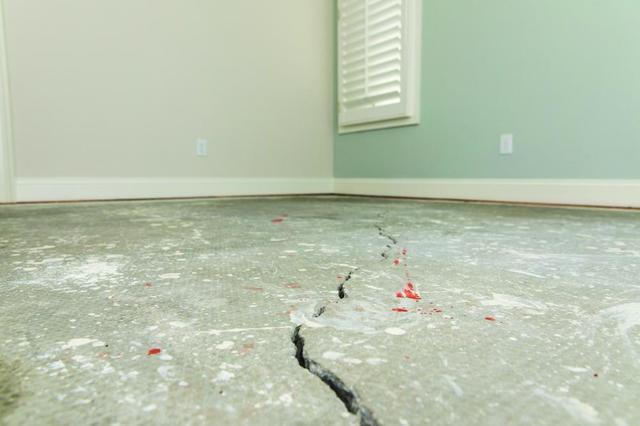What Causes Concrete Damage?
Concrete slabs are found in a number of locations around your home. They make up your driveway, sidewalks, patios, pool decks, garage floors, and interior floors to name a few. Over time these concrete slabs can begin to deteriorate - becoming uneven, cracking, flaking, pitting, and picking up stains.

But what causes concrete failure in the first place?
Lots of different variables contribute to concrete deterioration, but the main 5 culprits are loose fill-soil, wash-out, dry-out, slab expansion, and water entering grid lines.
Loose Fill-Soil:
The soil outside of your home is made up of multiple layers. When developers prepare the area for construction, they move the soil around - which results in an unstable top layer. When concrete is poured over this unstable layer it can become susceptible to settling and falling into pits caused by erosion. This can occur even if the soil was compacted before construction.
Dry-Out:
As conditions become hot and dry in the summer, the soil beneath your concrete may begin to dry out and crack. This leads to an unstable base for your concrete, and when that concrete is then exposed to weight and pressure it can become uneven.
Wash-Out:
Once the soil is dry and unstable, solid rain can wash it out from beneath your concrete slab. This creates an uneven surface for your concrete to be situated on, which can result in sloping.
Slab Expansion:
Concrete expands and contracts depending on the temperature and moisture level in the air. Cold causes the slabs to contract, allowing cracks and joints to grow wider and collect debris. Heat causes slabs to expand, forcing them into positions that they aren’t meant to be in. This can result in “street creep” - where expanded concrete, asphalt, or simply downhill movement over time allows the street to begin forcing its way into driveways and sidewalks. This may lead to driveway slabs becoming compromised - which can cause buckling and cracking over time.
Typically contractors will install a barrier between slabs of concrete (like the driveway and the garage or the street and the driveway). These are called “expansion joints,” and are meant to absorb any pressure created by expanding concrete. However, if these were not installed at the time of construction, installed incorrectly, or the joint becomes compromised over time, this can lead to concrete becoming uneven and damaged on your property as it is pushed against.
Control Joints:
Control joints are lines scoured into the concrete when it’s poured to help control the cracking pattern. They are important, but can also provide a pathway for water to infiltrate beneath the concrete. This can result in muddy, unstable soils and erosion over time.
What about staining and pitting?

Surface Deterioration:
Pitting and flaking are the results of water damaging the surface of your concrete over time. After heavy rain, the surface of the concrete will absorb water (like a sponge). When this water then evaporates or freezes, it creates or widens existing surface damage on the face of the concrete. Many people attribute this damage to salt laid down in the winter, but that is not totally accurate. Laying down salt can melt existing ice and snow into water, which then refreezes on the surface of the concrete - widening imperfections. This damage worsens every year as the seasons and weather change until it is noticeable to the naked eye. This can decrease your property value and create pathways in the concrete’s surface for further damage.
Staining:
Concrete is porous - meaning it can absorb substances like oil, mold, dirt, fertilizer, and more! This forms ugly stains over time that damage your concrete and lower your property value.
What should I do?
Concrete issues don't get better over time, so putting off making a concrete repair appointment is only going to lead to more unevenness and deterioration. The earlier you decide to fix your concrete problems, the earlier a professional can help to prevent further damage and save you money down the line. If you ever plan to sell your home or have it evaluated, you are going to wish that you had repaired your concrete when you first noticed the damage.

